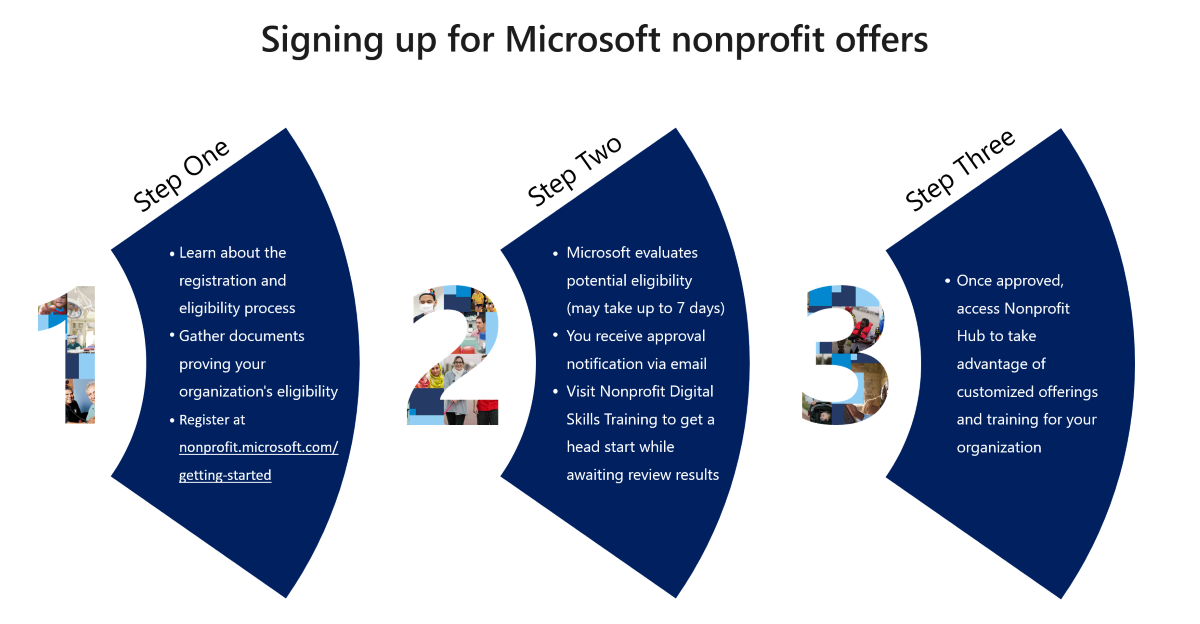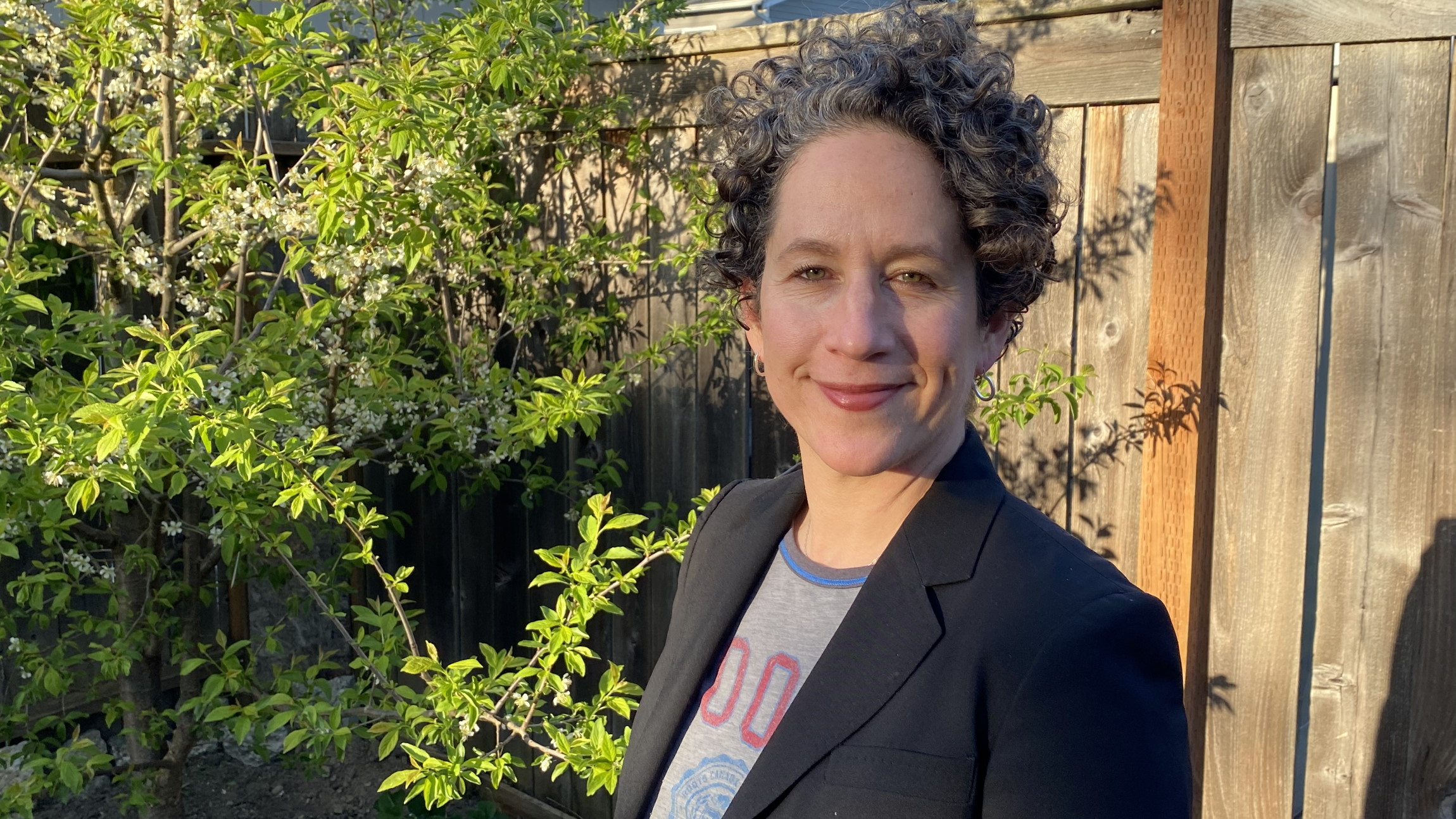This content has been archived, and while it was correct at time of publication, it may no longer be accurate or reflect the current situation at Microsoft.
Placing Microsoft’s technology in the hands of people who help others just got easier, thanks to a makeover of the Microsoft nonprofit offers process.
Nonprofit organizations like Team Rubicon have been on the frontlines of the coronavirus response, mobilizing to help distribute vaccines in hard-to-reach communities. To coordinate the complex logistics of getting volunteers and vaccines out quickly where they’re needed, the veteran-led disaster response organization has leveraged technology tools like Microsoft Cloud for Nonprofit and Microsoft Dynamics 365, which it obtained through Microsoft nonprofit offers that provide technology discounts and grants to people who need it most.
“COVID-19 challenged Team Rubicon to flex and pivot in new ways as we expanded our capabilities to respond to the needs brought about by the pandemic,” says Raj Kamachee, chief information officer at Team Rubicon. “We’ve had to adapt and change how we approach our operations, and technology has been a huge part of that.”
Microsoft Dynamics 365 played a pivotal role.
“Through Dynamics 365, we’ve been able to plan, launch, and manage operations remotely and in-person, allowing us to serve 9.7 million people in 2020,” Kamachee says. “So far in 2021, we’ve been able to support vaccination distribution in over 46 cities, while also responding to disasters across the country.”
More than 240,000 nonprofit organizations have taken advantage of Microsoft nonprofit offers, such as free licenses for Microsoft 365, Microsoft Dynamics 365, and Microsoft Azure cloud services, since the company launched its Tech for Social Impact program in 2017.
However, the team that runs the program noticed a problem.
“A lot of nonprofit customers were coming to the site each day, but only a small fraction was completing the process,” says Emily Fishkind, senior program manager for the Microsoft Digital team that supports Microsoft Philanthropies. Microsoft Digital is the organization that powers, transforms, and protects Microsoft. The team wanted to ensure that the experience had a logical flow and that Microsoft’s eligible nonprofit customers were able to complete the registration process.
“Nonprofits have been hit so hard during this pandemic,” Fishkind says. According to data published in November by The Independent Sector, more than a million people employed in the nonprofit sector in the US alone have lost their jobs. Seven percent of US-based nonprofits have closed their doors permanently.
“We really want to help galvanize them so they can meet their missions,” Fishkind says.
Tech for Social Impact and the larger Microsoft Philanthropies team set out to not only figure out what was preventing so many of these organizations from completing the registration process for Microsoft nonprofit offers, but to improve the overall experience for these special customers as well.
[Watch this webinar to find out how user experience drives modern management at Microsoft. Learn about how Microsoft uses machine learning to develop smart energy solutions.]
For a transcript, please view the video on YouTube: https://www.youtube.com/watch?v=3X-UxIVDiJ0, select the “More actions” button (three dots icon) below the video, and then select “Show transcript.”
Multiple teams, multiple experiences
Depending on which product a nonprofit customer is interested in, they might have had to bounce back and forth between Microsoft’s nonprofit portal and multiple different Microsoft product sites.
Scott Brown, a program manager who leads business operations for Microsoft Philanthropies, says that was a major root of the problem. “It always stood out as a disjointed process,” Brown says.
There were all these different pieces of the puzzle, so trying to build an interface that worked across all of them was super challenging. Our goal was to rebuild that experience to make it as easy as possible for customers to gain access to nonprofit offers.
– Scott Brown, program manager, Microsoft Philanthropies
Plus, Tech for Social Impact was using a registration form that was standardized across Microsoft but wasn’t necessarily the best suited to collect the unique information needed to determine nonprofit eligibility and discounts.
Here the team saw an opportunity to apply the company’s broader digital transformation strategy to enhance nonprofits’ experience with greater customization to their unique needs.
“There were all these different pieces of the puzzle, so trying to build an interface that worked across all of them was super challenging,” Brown says. “Our goal was to rebuild that experience to make it as easy as possible for customers to gain access to nonprofit offers.”
Given that multiple teams owned various legs of the user experience, it was also hard for Microsoft’s Tech for Social Impact team to gather any meaningful telemetry that would provide insights into where in the funnel applicants were dropping off.
Consolidating ownership was key.

Manabendra Roy, a principal software engineering manager who worked on the platform redesign for Microsoft Philanthropies, says he understood that there were good reasons why signup experiences should be consistent across “One Microsoft.”
Fortunately, Roy says, Microsoft Signup, the team that owns that experience, also recognized the unique situation for nonprofits. They were convinced to turn ownership of the experience over to Tech for Social Impact to customize and manage.
“They agreed to let us build the user interface, which gives a holistic experience for the nonprofits,” Roy says. “But behind the scenes, all the infrastructure, the platform, the APIs, would still be theirs.”
Turning knowledge into power
Rebuilding the Microsoft nonprofits offers process gave the collective team access to website telemetry, which everyone could then use to see where nonprofit customers were having issues.
The data generated interesting learnings, including showing the team which fields customers were having trouble filling out and exactly where they were dropping off. “Those were the insights we needed to be able to do more research,” Roy says.
Diving deeper in the right areas was one of the first steps the team took toward enabling a better data-driven user experience.
A user experience team worked directly with nonprofit customers to understand their needs and pain points with the registration process. The team also reached out to TechSoup, Microsoft’s partner for vetting nonprofits, to streamline the requirements for validating program eligibility.
As a result, the process for accessing Microsoft nonprofit offers was reduced from days to minutes.
Considering that we’re living at a time in history when nonprofit work is so critical, it’s great to be able to get more products and services into their hands.
– Emily Fishkind, senior program manager, Microsoft Philanthropies
As for the data entry fields on the website, the team trimmed the number of registration steps from 10 to four. To ensure that customers knew where in the process they were and which steps they still needed to complete, they built a wizard to help guide the customer through to the end. The team is still running user testing to further optimize the registration process.

In the month following the launch of the new Microsoft nonprofit offers experience in December, the conversion rate jumped from 38 to 47 percent, a sizeable jump but one with room for additional improvement.
“For these nonprofits, that’s direct value to their organizations right away,” Fishkind says. “Considering that we’re living at a time in history when nonprofit work is so critical, and they’re seeing increased demand for services and a decrease in funding donations through this global pandemic—it’s great to be able to get more products and services into their hands.”
A big vision for small organizations
Microsoft doesn’t just want nonprofits to be able to access its tools and technologies—it wants to make sure they’re getting the most out of them.
Angelica Guardia, a customer program manager for Tech for Social Impact, says that the team’s larger plans include providing nonprofits with a comprehensive knowledge and resource center they can return to again and again.
Beyond the improved registration experience, the team is continuing its work on a redesigned hub built on Microsoft Azure technology with customized views, AI-driven product recommendations, and robust product support.
“So many nonprofits have had to pivot to a remote model overnight,” Guardia says. “Most of them who are going through this experience are the small ones with just a few employees who don’t have IT departments or consulting firms.”
That’s why understanding telemetry and translating that into a more optimal nonprofit customer experience is a top priority. The new hub will also offer training resources and help with using Microsoft’s software and services.
“I feel responsible for understanding how they’re using our technology,” Roy says. “They got Azure from us, but how are they using it?”
Making this experience seamless for nonprofit organizations is just one extension of Microsoft’s broader ongoing commitment to supporting their work, whether through Microsoft nonprofit offers, co-development partnerships to innovate problem-solving technologies, or other recently-announced initiatives like Microsoft Cloud for Nonprofit, which offers integrated solutions specifically designed for common nonprofit scenarios.
“We are trying to get technology into the hands of every nonprofit around the world,” Guardia says. “It’s core to Microsoft’s mission—empowering every organization—nonprofits included.”
Nonprofits interested in registering for Microsoft nonprofit offers can get started here.
Watch this webinar to find out how user experience drives modern management at Microsoft.
Learn about how Microsoft uses machine learning to develop smart energy solutions.





